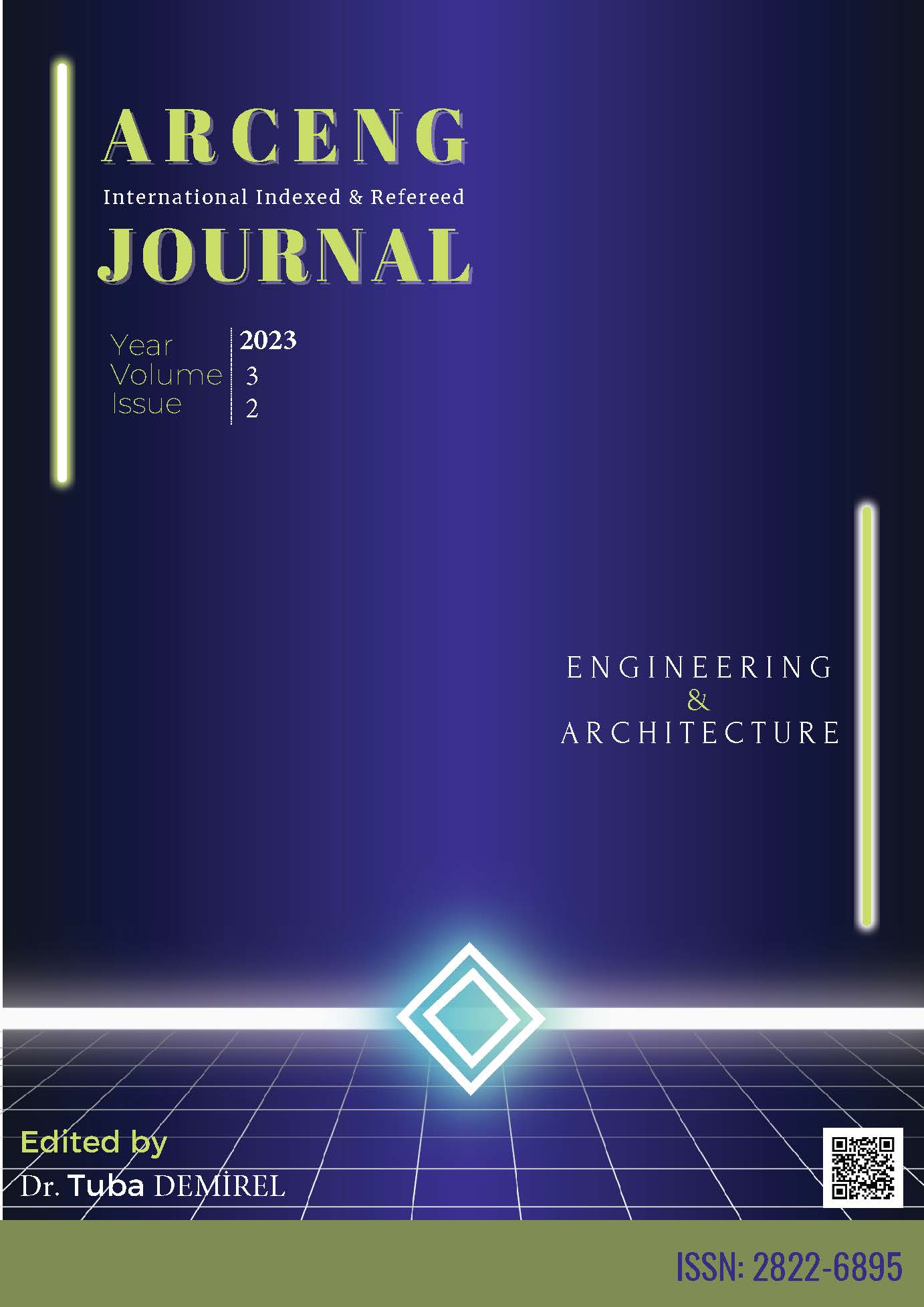Gender and Housing Design Influence
DOI:
https://doi.org/10.5281/zenodo.10470832Keywords:
Gender-Aware Design, Hayatlı Ev, Minimum Dwelling, Working Class Women, Gendered SpacesAbstract
This paper fulfills an understanding of how gender-aware design might influence future housing developments and spatial designs. The study mainly aims to clarify the relationship between gender and housing design seeks answers to how gender-aware design might influence future housing developments and tries to make a comprehensive contribution to academia on housing with a special issue on gender-based dwelling architecture. The study aims to present suggestions for future housing developments, spatial planning, and furnishing designs to improve the quality of space design of future houses. To achieve this purpose, firstly, comprehensive deep research has been realized on gender, gender-related design, and gender influence on housing with the question of ‘how might gender-aware design influence future housing developments?’. Secondly, case analyses were used to demonstrate the impacts of gender on the spatial planning of houses with two iconic samples in the architectural literature; the spatial organization of traditional Turkish houses (Hayatlı Ev), and modernist Minimum Dwelling. These two case analyses empower valuable data on gender-related house planning, space organization, equipment selection, furniture, and material design, which are linked with gender issues. Cases have been selected especially for their gender-aware designs, iconic spatial features, socio-cultural status, and lifestyles; the traditional Turkish house ‘Hayatlı Ev’ and the ideological modern ‘Minimum Dwelling’, which delegate comparative analyses and distinctive spatial, and socio-cultural features. In the end, the study aims to develop design parameters and bring out innovative and avant-garde design methods for future houses by using gender-aware architecture.
References
Kuban D, ‘Bölüm 1:Hayatlı Ev Nedir?’’, in Türk ‘’Hayat’’lı Evi, Yapımcı: MTR, Art Direktör: Cemile Mukaddes Özdemir, Baskı:Mısırlı Matbaacılık A.Ş., Cilt:Uycan, İstanbul, 1995, pp.16-23.
Kuban D., ‘’Bölüm 2: Morfoloji’’,’’Beşinci Bölüm: Tipoloji Üzerine Düşünceler’’, in Türk ‘’Hayat’’lı Evi, Yapımcı: MTR, Art Direktör: Cemile Mukaddes Özdemir, Baskı:Mısırlı Matbaacılık A.Ş., Cilt:Uycan, İstanbul, 1995, pp. 103-136
Kuban D., ‘’Bölüm 4: Hayatlı Evin Evrimi’’, in Türk ‘’Hayat’’lı Evi, Yapımcı: MTR, Art Direktör: Cemile Mukaddes Özdemir, Baskı:Mısırlı Matbaacılık A.Ş., Cilt:Uycan, İstanbul, 1995, pp. 47-99
Kuban D., ‘’Bölüm 6: Hayat’’, in Türk ‘’Hayat’’lı Evi, Yapımcı: MTR, Art Direktör: Cemile Mukaddes Özdemir, Baskı:Mısırlı Matbaacılık A.Ş., Cilt: Uycan, İstanbul, 1995, pp. 137-151
Teige K., ‘’1.introductory remarks: toward a dialectic of architecture and a sociology of dwelling’’, Minimum Dwelling, MIT, 2002, pp. 9-31
Teige K., ‘’9.the modern apartment and the modern house’’, Minimum Dwelling, MIT, 2002, pp. 216-233
Teige K., ‘’10.the minimum dwelling:three types of floor plan for small apartments’’, Minimum Dwelling, MIT,2002, pp. 234-271
Teige K., ‘’13.toward new forms of dwelling’’, Minimum Dwelling, MIT, 2002, pp. 323-392
Nylander, O., ‘’ Introduction: The Development of the Home: The 1930s: Worker Housing’’, The Home As Architecture, Wiley Academy, 2002, pp. 22-25
Rendell J., Penner B., Borden I, ‘’Part 1: GENDER: 2.Jane Rendell,Introduction:’Gender’.’’ Gender Space Architecture: An Interdisciplinary Introduction. Routledge, 2000, pp. 15-25
Rendell J., Penner B., Borden I, ‘’Part 2: GENDER, SPACE: 14: Jane Rendell,Introduction: ’Gender, Space’.’’ Gender Space Architecture: An Interdisciplinary Introduction. Routledge, 2000, pp. 101-111
Rendell J., Penner B., Borden I, ‘’Part 3: GENDER, SPACE, ARCHITECTURE: 26: Jane Rendell, Introduction: ’Gender, Space, Architecture’.’’ Gender Space Architecture: An Interdisciplinary Introduction. Routledge, 2000, pp. 225-240
JOURNALS
Ford C., (2022), ‘’ ‘‘Woman as Creator’’: Margarete Schütte-Lihotzky’s and Juliette Treant-Mathe’s Design of the New Dwelling in Interwars Europe,’’ Architectural Theory Review, vol.26, no.2, pp. 241-272, 2022, DOI: 10.1080/13264826.2023.2173791, https://doi.org/10.1080/13264826.2023.2173791
Uluçay,N.Ö., ‘’Savaş Sonrası Modernizm: Römerstadt Konutları ve Frankfurt Mutfağı,’’ Online Journal of Art and Design, vol:6, issue:2, April 2018, URL:https://www.researchgate.net/publication/327449103_Savas_Sonrasi_Modernizm_Romerstadt_Konutlari_ve_Frankfurt_Mutfagi
Vestbro, Dick Urban. “COLLECTIVE HOUSING IN SCANDINAVIA — HOW FEMINISM REVISED A MODERNIST EXPERIMENT.” Journal of Architectural and Planning Research 14, no. 4 (1997): 329–42. http://www.jstor.org/stable/43030435.
Roberts, Marion. “Gender and Housing: The Impact of Design.” Built Environment (1978-) 16, no. 4 (1990): 257–68. http://www.jstor.org/stable/23286227
Ülkü, Gözde. (2018). Konutun Cinsiyeti. Mimarlık Bilimleri ve Uygulamaları Dergisi (MBUD). 3. 63-80. DOI:10.30785/mbud.287911.
Akdemir, E. , Aykal,F.D, ‘’Kadının Mekanda ki Rolü ve Yöresel Konut Mimarisine Etkisi (The Role of Women in Space and its Effect on Vernacular Housing Architecture),’’ Journal of Urban Culture and Management, Vol:14, Issue:2, 2021. https://doi.org/10.35674/kent.910633
Irene Cieraad , 'Out of my kitchen!' Architecture, gender and domestic efficiency, The Journal of Architecture, 7:3, 263-279, 2002,DOI: 10.1080/13602360210155456
URL-1
‘‘İstanbul Tramvayı ve İstanbul Tramvay Tarihi Hakkında’06/07/2012,34 Istanbul,DÜNYA,DEMİRYOLU,GEENL,MANŞET,TÜRKİYE,’’ https://rayhaber.com/2012/07/istanbul-tramvayi-ve-istanbul-tramvay-tarihi-hakkinda/(accessed Sep.8,202
Downloads
Published
How to Cite
Issue
Section
License
Copyright (c) 2023 ARCENG (INTERNATIONAL JOURNAL OF ARCHITECTURE AND ENGINEERING) ISSN: 2822-6895

This work is licensed under a Creative Commons Attribution-NonCommercial 4.0 International License.


